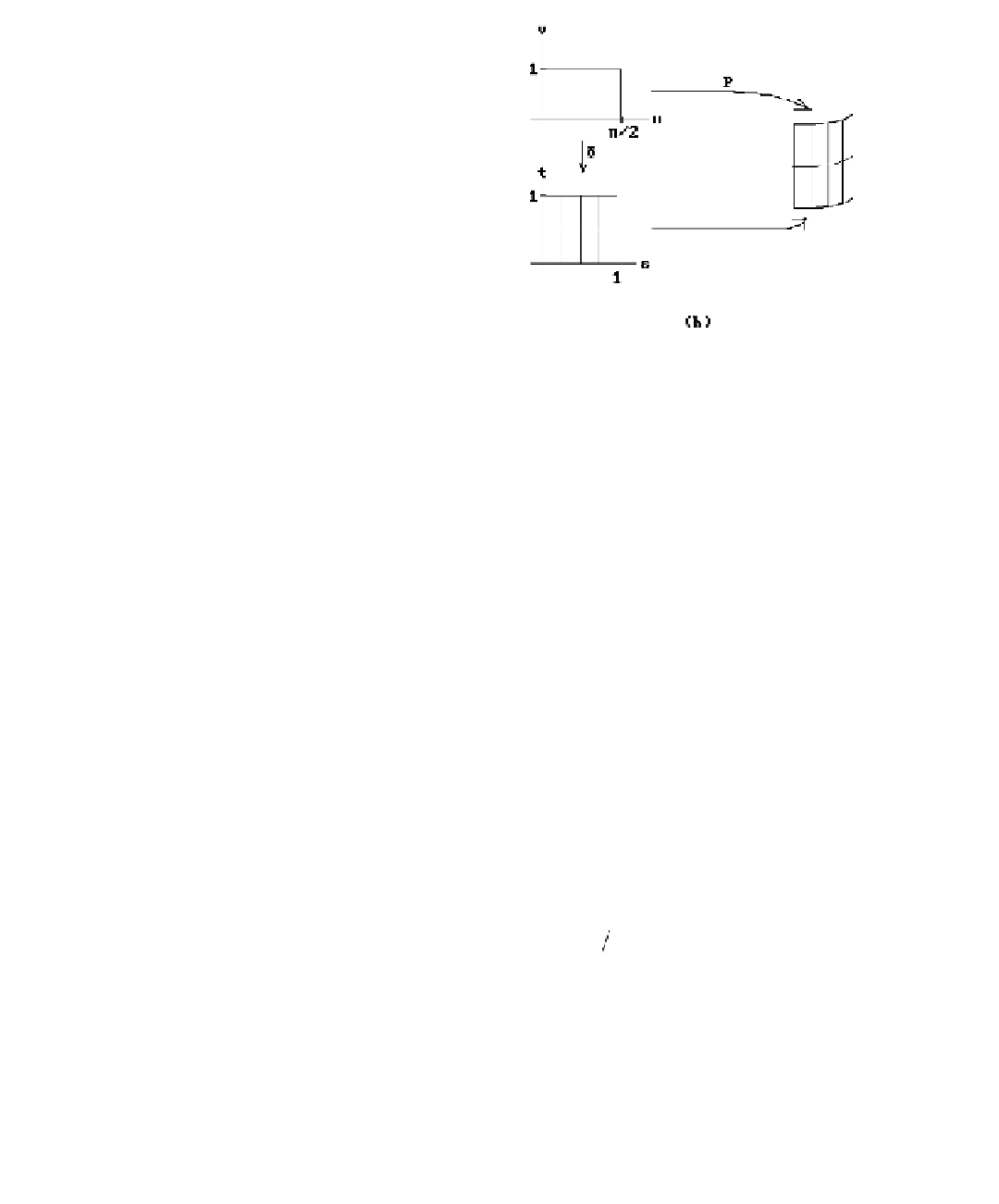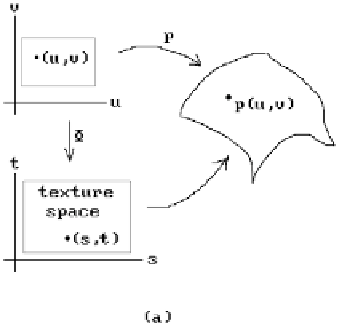Graphics Reference
In-Depth Information
Figure 9.14.
Texture mappings.
Structural Texture Measures.
The idea here is to find primitives from which the
totality is built. This clearly is hard to compute for natural textures. There may be a
hierarchy: one pattern may repeat to form a larger pattern. One can think of struc-
tural texture in a syntactical way. The primitives are a little bit like sentences of a lan-
guage with a specified grammar.
Texture is introduced into graphical images by means of
texture mappings
. It is a
way to attach detail to surfaces without a geometric model for the detail so that one
can produce much more complex images without more complexity in geometric
descriptions. This idea was first used by Catmull and then extended by Blinn and
Newell ([BliN76]). Heckbert ([Heck86]) presents a good survey of texture maps. See
also [WeiD97]. In general, texture maps can be functions of one or more variables.
We concentrate on the two variable case here.
Assume that we are given a surface patch parameterized by a function p(u,v). In
addition to each point
p
on the surface having (u,v)-coordinates, we now associate
texture coordinates
(s,t) and a predefined texture map T(s,t) defined on this texture
coordinate space, which defines the light intensity at the point
p
. If
p
projects to screen
coordinates (x,y), then the value T(s,t) is copied to frame buffer location (x,y). Basi-
cally, we have a map F which sends (u,v) to (s,t). See the commutative diagram in
Figure 9.14(a). Usually the map F is a linear map and T is represented by a two-
dimensional array. Figure 9.14(b) shows how one can map a grid of lines onto a cylin-
der. The parameterization is assumed to be the map p given by
(
)
=
(
(
)
(
)
)
puv
,
cos
u
-
p
2
, sin
u
-
p
2
,
v
With domain [0,p/2] ¥ [0,1]. The map F is given by
(
)
=
(
)
F uv
,
2
u
p
,
v
.
If T is represented by a two-dimensional array, then the intensity
T(Round(2u/p),Round(v)) would be associated to the pixel at (x,y). Another way to



